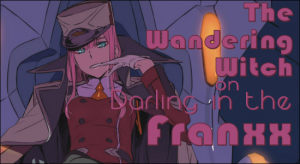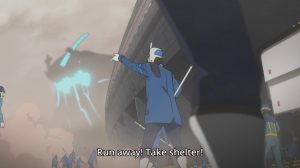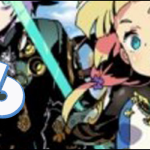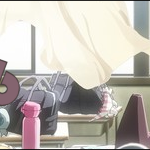The Wandering Witch on Darling in the Franxx

Welcome, all, again. It isn’t often that I become interested in–let alone excited by–offerings from the mecha genre. In fact, my last review herein of such a show was back in September with Knight’s & Magic. But let’s be honest–a good show is a good show, period. And so I find myself reviewing Darling in the Franxx by Studio Trigger, those same mad geniuses who gave us Kill la Kill and Space Patrol Luluco, amongst other titles. Now, Trigger has a reputation for gratuitous violence and sexually suggestive content, and they mean to make this series count for both! True to form, the animation quality varies from scene to scene, becoming as detailed or unfocused as the mood and/or importance of its implied moment; nonetheless, this is a well-crafted story with relatable (if sometimes stock) characters. With Darling in the Franxx, Trigger has given us exactly what we’ve come to expect from them: another wild, keyed-up ride!

Darling in the Franxx is set in some bleak, post-apocalyptic future wherein humanity’s continued existence is in question and peril. The environment has become harsh and unforgiving, prompting the encapsulation of human settlements into mobile “plantations.” Worse yet, new creatures called klaxosaurs roam the land and are attracted to the human settlements due to their energy production. Judging simply from their depicted design[s], I would caution a guess that klaxosaurs are probably some form of animated, vaguely sentient machinery. Certainly, machine parts are at the very least incorporated as components of their bodies. And this observation probably goes some length in explaining why they feed off the energy produced by the human settlements. This energy originates with mining for magma, a precarious process that seems to halt a plantation’s movement. Plantations are also capable of transferring or sharing energy through a process called “kissing,” but this too halts their movement and makes them extremely vulnerable to attack–doubly so, since two are now stopped in one location. Because this is an original series which launched its manga version at basically the same time as the anime, I have no source material to check, but I’m wondering both how these mechanized monsters came into existence and just how dependent they are upon the energy produced by humans. (I’m actually kind of thinking back to 2015’s God Eater anime.) I would think that these might prove to be important questions, later in the story.

That’s the overall setting, so let’s get right down to the meat of the matter: this society which has developed within the iron vice of horrifying pressures has answered with its own horrifyingly calculated adaptation, sacrificing certain of its youth through combat. Again, I am somewhat hindered by the lack of source material–are these youngsters orphans in state care, unwanted, or–as occasionally implied–specifically birthed to train, fight, and die in defense of humanity? But perhaps by forcing us to share these kids’ ignorance about their origins, Trigger meant to move us beyond curiosity to sympathy. It worked. Teams are gathered in early childhood and thereafter train together, eventually to be hurled together into combat against the klaxosaurs. But however the children are chosen, they are strictly segregated from the rest of their society as they train, and never really allowed to understand the processes of their own maturing. Specifically, their abilities to pilot their mecha (called Franxx, after the inventor) seem to reside in the fact of their experiencing puberty, with its physical sexual maturation and accompanying mental and emotional turmoil; yet these pilots are brainwashed into believing that they are still mere “children.” Each Franxx requires both a male and female pilot working together in a tandem of sexual tension as she in her electronic bodysuit positions herself on all fours right in front of him, controls extending from her derriere. This of course heightens their sensitivity to each other, but any emotional or mental disconnect between them can terminate their mecha’s operability. (Two words: teen angst!) Hiro, our protagonist, was unable to pilot with his assigned partner, and lost his position as a parasite (mecha pilot). But the arrival of Code 02, an independent-minded girl with klaxosaur blood, offers him a second chance at piloting and a first chance to discover a relationship beyond it. Just one problem: her partners all die.

Darling in the Franxx is proving to be incredibly entertaining! The character exposition is sometimes overplayed, but the character development is intriguing, particularly amongst Hiro, Ichigo (unit leader), and Code 02. Duty and loyalty contend with jealousy and pride as Hiro tries to reinsert himself into his unit, only to clash with the egos of those who feel they have moved beyond him and any contribution he might offer. The real question, I think, must be: what is Code 02’s endgame? Let’s find out!
















iStalk? uStalk!